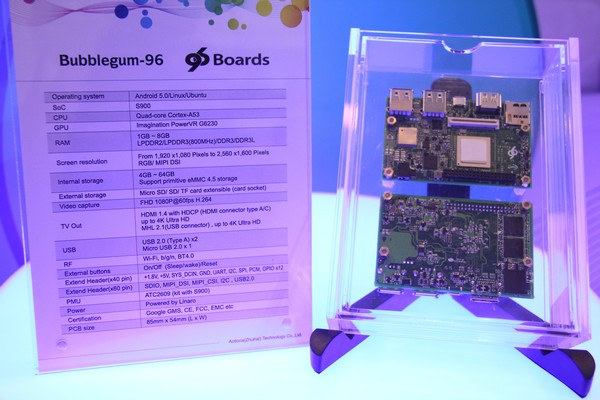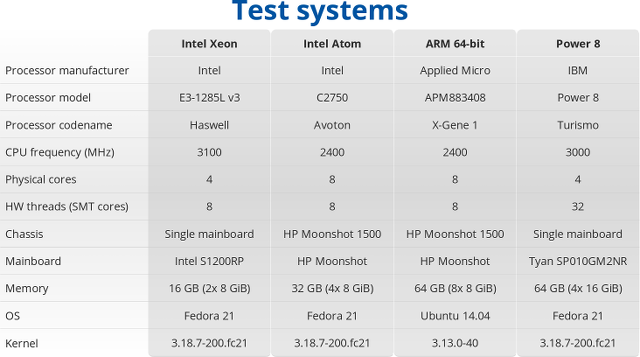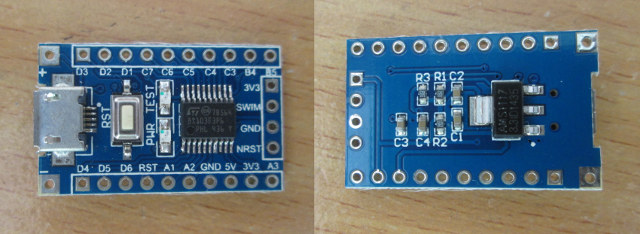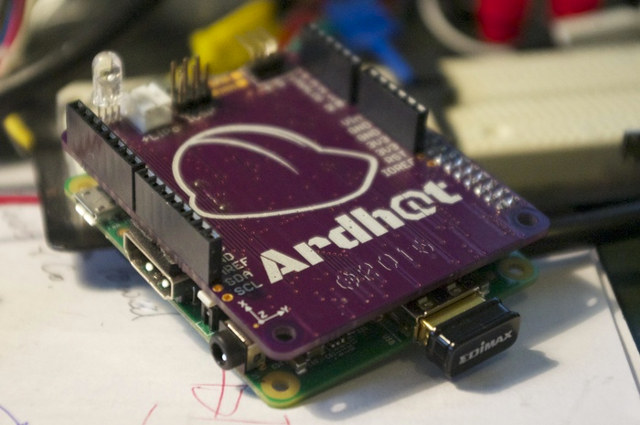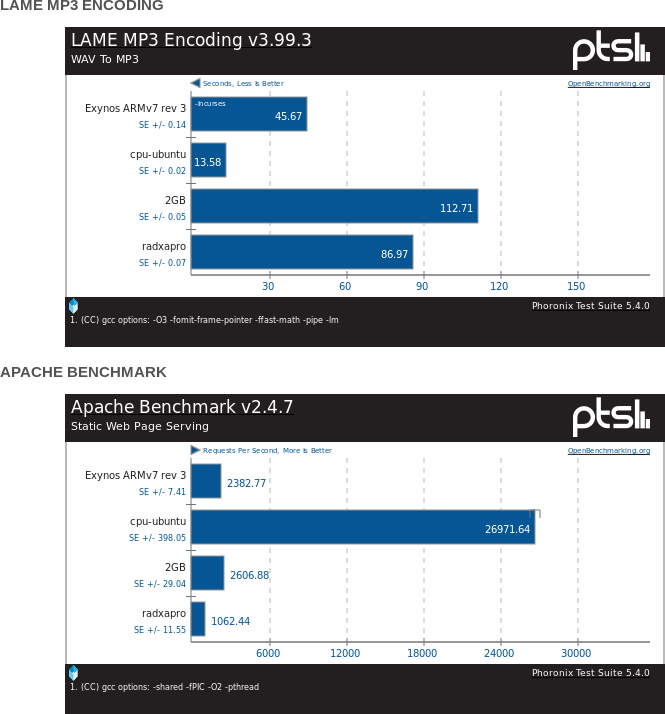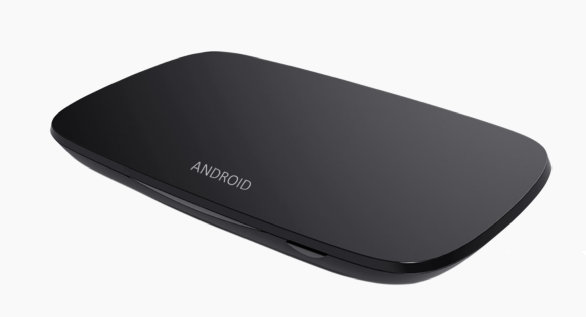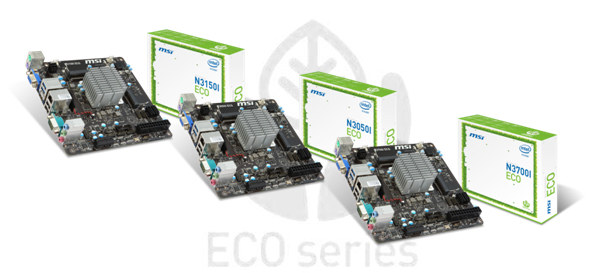We’ve already have two 96Boards compliant boards formally announced with HiSilicon Hikey and Qualcomm Dragonboard 410c, and Actions Semiconductor was also expected to release theirs soon. Albeit it’s not been officially announced yet, the company has been showcasing their Bubblegum-96 board at the Hong Kong Electronics Fair 2015. Bubblegum-96 development board specifications: SoC – Actions Semi S900 quad core Cortex A53 with PowerVR G6230 GPU System Memory – 1 to 8GB LPDDR2 / LPDDR3(800MHz) / DDR3 or DDR3L Storage – 4 to 64 GB eMMC 4.5 flash + micro SD slot Video Output – HDMI 1.4 with HDCP up to 4K, MHL 2.1 up to 4K Connectivity – Wi-Fi 802.11 b/g/n, Bluetooth 4.0 USB – 2x USB 2.0 ports, 1x micro USB 2.0 port Expansion 40-pin LS (Low Speed) Expansion connector – UART, I2C, 12x GPIOs, SPI, PCM, 1.8V, +5V, GND… 64-pin HS (High Speed) Expansion connector – DSI, CSI, […]
Linux 4.0 Release – Main Changes, ARM and MIPS Architectures
Linus Torvalds “Ima Sheep” released Linux Kernel 4.0 on Sunday: So I decided to release 4.0 as per the normal schedule, because there really weren’t any known issues, and while I’ll be traveling during the end of the upcoming week due to a college visit, I’m hoping that won’t affect the merge window very much. We’ll see. Linux 4.0 was a pretty small release both in linux-next and in final size, although obviously “small” is all relative. It’s still over 10k non-merge commits. But we’ve definitely had bigger releases (and judging by linux-next v4.1 is going to be one of the bigger ones). Which is all good. It definitely matches the “v4.0 is supposed to be a_stable_ release”, and very much not about new experimental features etc. I’m personally so much happier with time-based releases than the bad old days when we had feature-based releases. That said, there’s a few […]
HPC Performance & Power Usage Comparison – Intel Xeon E3 vs Intel Atom C2720 vs Applied Micro X-Gene 1 vs IBM Power 8
Last year, the CERN published a paper comparing Applied Micro X-Gene (64-bit ARM) vs Intel Xeon (64-bit x86) Performance and Power Usage, and they’ve now added IBM Power 8 and Intel Atom Avoton C2750 processor to the mix in a new presentation entitled “A look beyond x86: OpenPOWER & AArch64“. So four systems based on Intel Xeon E3-1285L, Intel Atom C2750, Applied Micro X-Gene 1, and IBM Power 8 were compared, all running Fedora 21, except the HP Moonshot 1500 ARM plarform running Ubuntu 14.04 and an older kernel. All four systems use gcc 4.9.2, and Racktivity intelligent PDUs were used for power measurement. I’ll just share some of their results, you can read the presentation, or go through the benchmark results to find out more. HEP-SPEC06 is a new High Energy Physics (HEP) benchmark for measuring CPU performance developed by the HEPiX Benchmarking Working Group, and here it’s not […]
How to Program STMicro STM8S $1 Board in Linux
In January, I discovered there was such thing as a one dollar development board based on STMicro STM8S103F3P6 8-bit MCU with 1KB SRAM, 8KB flash, and 640 bytes EEPROM, some GPIOs as well as I2C, UART, SPI, ADC, and PWM signals. Links to documentation and source code were provided, but development tools were only Windows based. However, one of my reader informed me SDCC (Small Devices C Compiler) supported STM8, and development in Linux should be feasible. So I decided to buy the board on eBay for $1.62, as well as an ST_link V2 programmer for STM8 / STM32 for $4.52 in order to flash the firmware. The board came pretty quickly, i.e. within 2 to 3 weeks. But due to a lost package, the programmer took nearly 3 months to reach me, as the seller had to re-send after I failed to receive it within 2 months. It comes […]
ARDHAT adds Arduino Shield Compatibility, an ISM Band Radio to Raspberry Pi and ODROID-C1 Boards (Crowdfunding)
NinjaBlocks created Pi Crust add-ons board adding a 433MHz radio and Arduino compatibility to the Raspberry Pi Model A & B a few years ago, but the product has since been removed from their store. But a startup called ubIQio has now created a similar product compatible with Raspberry Pi Model A+, B+ and B2, as well as ODROID-C1 which also comes with a 40-pin R-Pi header. The ARDHAT board is a HAT compatible add-on board with an Atmel MCU, Arduino headers, as well as an optional long range mesh ISM radio (433, 868 and 915 MHz) and various sensors. There are four versions of the board: Basic Ardhat, Ardhat-I, and Ardhat-W and Ultra, which share the following specifications: MCU – Atmel MCU @ 16MHz Headers and I/Os Arduino compatible header accepting 5V Arduino shields 12 ch PWM O/P, 6 ch analog I/P Real-time Clock Programmable Power/Navigation combo switch Programmable […]
How to Compare Systems Benchmarked with Phoronix Test Suite
Phoronix Test Suite is an open source benchmark for Linux, Solaris, Mac OS X, Windows & BSD operating systems, but in practice it’s mostly used for Linux OS since other benchmarks solutions are available in Windows, while choices are more limited in Linux. There are many benchmarks to choose from, and you can select the ones you want by running a “batch-benchmarks” from the command line. I’ve done so when testing performance of ODROID-XU3 Lite and Cubieboard4 boards in Ubuntu, and once the tests are completed, the results will be automatically uploaded to openbenchmarking.org. From there, it’s quite easy to compare recent results as you’ll get an “add to comparison” option on the site, and you can pick a few results. You can select a few systems, and then click on “Compare Results” to get a side-by-side comparison. If you want to compare your system to an existing system, you […]
ALi M3733 Dual Core Processor Finds its Way into DVB-T2 & DVB-S2 Android and Linux Set-top Boxes
Ten years ago, I remember ALi was in big player in DVD players, but I had not much heard about them since then. Thanks to a ARMdevices.net I found out they are still around, and their latest Ali M3733 dual core ARM Cortex A9 processor will soon be found in DVB set-top boxes like Uyesee L100T2 with a DVB-T2 tuner, or EKT DSD7045 DVB-S2 hybrid set-top box. The former is running Android 4.4, but the latter is likely based on Linux since it only has 512MB NAND flash. The EKT receiver runs SolidTV middleware with HbbTV, conditional access, and more features, and it does look like an interesting product, but I’ll focus on the Uyesse for this post: SoC – ALi M3733 dual core Cortex A9 processor with a dual core Mali-400 GPU System Memory – 512 MB DDR3 (Option: 1GB) Storage – 4GB NAND flash (Options: 8 to 32GB) […]
Intel Celeron N3000 2-in-1 Laptop, and MSI Motherboards with Celeron N3050/N3150 and Pentium N3700 Processors
Intel introduced the first low power Braswell Celeron and Pentium processors with 4 to 6W TDP, meaning a lower power consumption compared to Bay Trail-M processors, and with better performance. The first devices and motherboards based on these have started to show up with Intel’s Orchid Island 2-in-1 Reference Design based on Celeron N3000, and three MSI motherboards: N3050I ECO, N3150I ECO, and N3700I ECO respectively powered by Celeron N3050 dual core processor, Celeron N3150 quad core processor, and Pentium N3700 quad core processor, all clocked @ 1.6GHz (base frequency) and with 6W TDP. MSI did not release full details about their motherboards but we still now they’ll support H.265/HEVC hardware decoding up to 4K, Blu-ray playback and 8-channel HD Audio via an HDMI 1.4b port. Other connectors and interfaces include two DDR3L-1600MHz SO-DIMM slots (up to 8GB), two SATA III ports, one PCIe slot, Gigabit Ethernet, a COM port, […]


